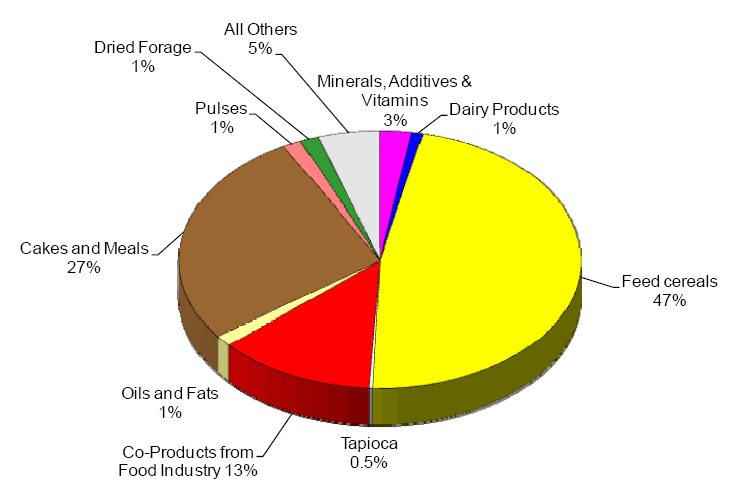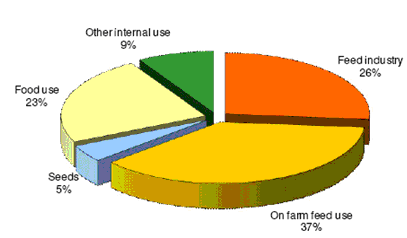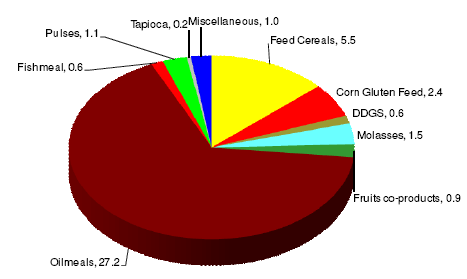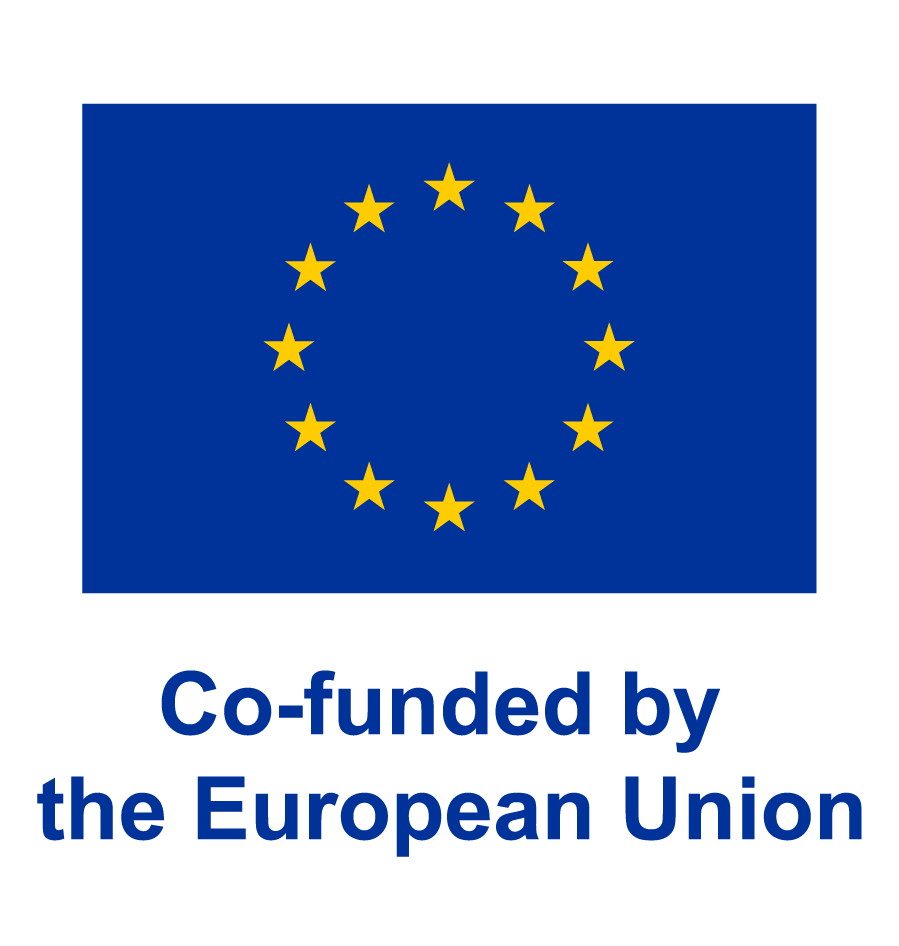Consumption of feeding stuff in EU
Feeding stuff may comprise a wide range of ingredients. Council Directive 92/25/EC of 29 April 1996 presents a non-exclusive list of the main feed materials. This list includes cereal grains, a wide range of by-products from different cereal processing, e.g. cereal bran and middling, a wide range of different by-products from manufacturing oil (e.g. rapeseed, palm kernel, soybeans, cotton seed, sunflower seeds, linseeds, cocoa bean), sugar (e.g. sugar beet pulp and molasses), different potato products (e.g. pulp, starch, protein, flakes), and fruit juice (e.g. citrus pulp, tomato pulp). The list also includes legume seeds, alfalfa, clover, grass and cereal straw .
Some of the information and illustrations in the following are from a presentation by Finn Vestergaard from DLG given at the EURL workshop in Copenhagen in 2008. The presentation is available at http://www.eurl-pesticides.eu.
Figure 3.1 shows feed material consumption by the EU compound feed industry. The proportion of feed materials per category has remained relatively stable (47% for cereals, 27% for oilseed meals) compared to previous years , and feed cereals account for almost half of the raw materials in the production of compound feed.
Figure 3.1: Feed material consumption by the compound feed industry in 2007 in the EU-27
 http://www.crl- pesticides.eu/docs/public/tmplt_article.asp?LabID=400&CntID=652&Theme _ID=1&Pdf=False&Lang=EN
http://www.crl- pesticides.eu/docs/public/tmplt_article.asp?LabID=400&CntID=652&Theme _ID=1&Pdf=False&Lang=EN
The production of feed accounts for a large part of the agricultural activity in the EU. Approximately 120 million tonnes of feeding stuffs are produced in the EU each year . In 2007, production of cereals could be broken down between food uses and feed as described in Figure 3.2. The term 'on farm feed use' means that the farmer uses his own crop to feed his animals, which means that the feed never leaves the farm. Thus by far the largest percentage of the cereal use in EU is for feed.
Figure 3.2: Usage of cereals in the EU27 in 2007-08 (19)

http://www.crl- pesticides.eu/docs/public/tmplt_article.asp?LabID=400&CntID=652&Theme _ID=1&Pdf=False&Lang=EN
Some important ingredients which cannot be grown in the EU are imported from third countries. These diverse sources of raw material supplies are an important factor in industry's ability to manufacture feeds of high quality and at competitive prices for livestock farmers. Figure 3.3 shows imports of feed materials to the EU from 2000-2005. As it is seen from the figure primarily oil meals, including soy meals, are imported to the EU.
Figure 3.3: Imports of feed materials in the EU-25 in 2006 (19)

http://www.crl- pesticides.eu/docs/public/tmplt_article.asp?LabID=400&CntID=652&Theme _ID=1&Pdf=False&Lang=EN
To a large extent the EU is self sufficient in production of cereals (Table 3 1), which means that a monitoring programme for cereals should focus on cereals produced within the EU. In contrast, the EU is very dependent on imports of soy (only between 6% and 18% comes from the EU itself), so for this crop focus should be outside EU.
| Total cereals | Common wheat | Durum wheat | Barley | Rye | Maize | Oats* | |
|---|---|---|---|---|---|---|---|
| Human consumption (%) | 23 | 40 | 87 | 0,7 | 42 | 6 | 17 |
| Animal feed (%) | 63 | 49 | 4 | 75 | 30 | 83 | 75 |
| EU Self suffiency (%) | 98 | 101 | 88 | 106 | 89 | 92 | 89 |
*Including mixed corn summer cereals
Soybean has the highest content of proteins of all grain and it is the fourth most produced grain in the world, after maize, wheat and rice. Besides the potential of soybean as a nutrient for both humans and animals, this legume also enriches the soil with nitrogen through biological processes. Only four countries, the USA, Brazil, Argentina and China, are responsible for approximately 90% of world production and these countries also supply almost all the EU's soybean and soy meal imports. Over recent years, there has been an increase in worldwide soybean production, as well as in imports/exports and processing of soybeans. Brazil is the second largest producer of soybeans in the world. Much of the soybean production in Brazil, around 19 million tonnes of the 2004/2005 crop, is exported to several countries on different continents . The degree of self-sufficiency in the EU varied between 6% (soy meal) and 18% (soy oil) in 1998/99 (29).
Find more informatio in the menu below:
Published 12-07-2010, 11:45:45
Top of Page

